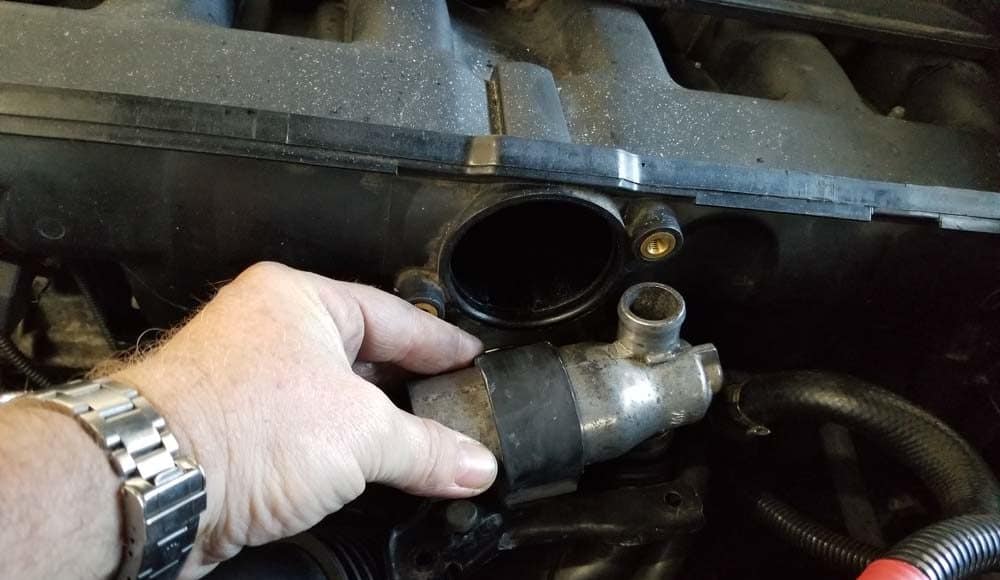Affiliate link disclosure – The BMW Repair Guide uses affiliate links in their site. For more information on affiliate links, please click here.
Repair Summary
The following article shows how to diagnose and perform a rough idle repair on a BMW E60 5 series vehicle with the M54 six cylinder engine. These "work horse" engines were used in many other BMWs besides the early E60 5 series models, including the 3,7,X and Z series cars and SUVs. The following repair can be used on any of these other vehicles with minor modifications.
See all vehicles this article applies to
E60 5 Series M5
E60 5 Series 523Li
E60 5 Series 550i
E60 5 Series 545i
E60 5 Series 540i
E60 5 Series 535d
E60 5 Series 530xi
E60 5 Series 530xd
E60 5 Series 530Li
E60 5 Series 530i
E60 5 Series 530d
E60 5 Series 525i
E60 5 Series 525xi
E60 5 Series 525Li
E60 5 Series 525d
E60 5 Series 523i
E60 5 Series 520i
E60 5 Series 520d
A BMW E60 rough idle repair is an easy procedure that is usually caused by a bad DISA or idle control valve on the intake manifold of the car.
As the first wave of BMW 5-series E60s reaches an automotive geriatric age of 15 years old, parts begin to wear out and our beloved bimmers start to lose their once silky sweet engine performance. One of the most frequent performance issues plaguing the older six-cylinder BMW M54 engines is a rough or fluctuating idle. Does the engine rpm in your car repeatedly drop and then recover when idling at a stop? Are you noticing fluctuations in your RPMs when holding the accelerator at a constant speed? Is your car idling rough or experiencing a loss of power when you depress the accelerator pedal? If you are experiencing any of these rough idle issues, there are a couple of quick rough idle repairs that can get your bimmer performing like new again.
There are two parts that are common contributing factors to a rough idling M54 engine: the DISA valve (also known as the intake air adjustment valve), and the idle control valve.
The DISA valve is located on the top left side of the intake manifold. Its function is to "fine-tune" the flow of air through the intake manifold. This intake tuning is done with the use of a flap, which redirects air within the intake manifold in order to achieve optimal flow into the cylinders. Common signs of a failing DISA valve or DISA valve o-ring are a rough idle and poor fuel economy.
The idle control valve on the BMW six-cylinder engine is also located on the left side of the intake manifold, just below the DISA valve. Its function is to bypass air around the throttle body so the engine can get air when idling. It also supplies air to the engine when you take your foot off of the accelerator at higher RPMs. Common signs of a failing idle control valve are fluctuations in the idle speed, and near stalling conditions when the foot is abruptly removed from the accelerator at a higher RPM.
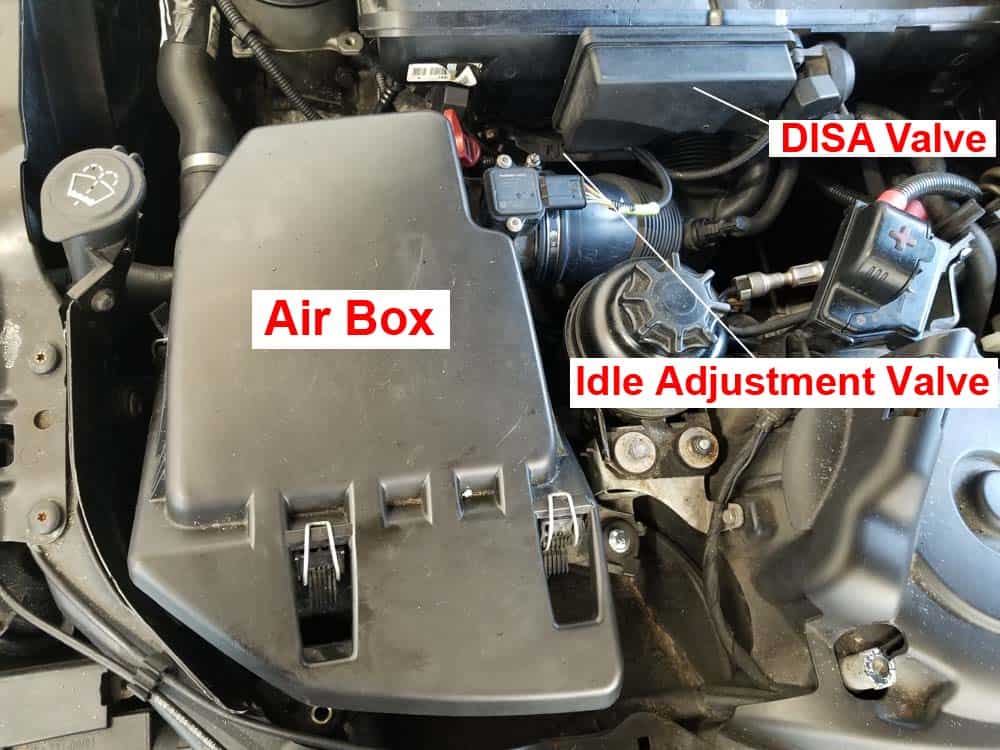
The BMW Repair Guide recommends replacing both valves when performing a BMW E60 rough idle repair. Since both parts have a maximum life span of approximately 100,000 miles if one is failing most likely the other is ready to go as well. Do yourself a favor and spend the extra money and replace both parts.



View the detailed parts diagram for this repair.
Includes detailed part diagrams, part numbers and links to purchase all of the required components needed to complete this repair.

Before starting this repair, you must have the following required parts.
BMW E60 530i
Air adjustment unit controls the path of the air in the intake manifold, allowing either a shorter or longer runner length. A common source of trouble causing low RPM sluggishness and accompanied by a clicking sound from the engine bay.
BMW E60 520i and 525i
Air adjustment unit controls the path of the air in the intake manifold, allowing either a shorter or longer runner length. A common source of trouble causing low RPM sluggishness and accompanied by a clicking sound from the engine bay.
All BMW E60 with M54 engine.
Kit includes valve, rubber grommet and rubber mount. The idle control valve is a critical part of the intake system and is a common source of rough idle issues and rpm fluctuations.
BMW E60 530i with M54 engine
This is the rubber intake boot that the mass air meter clamps to. If your boot has rotted or deteriorated, it will cause a rough idle and poor performance. Restore performance & driveability with this Original BMW replacement intake boot from ECS Tuning.
BMW E50 520i and 525i with M54 engine
This is the rubber intake boot that the mass air meter clamps to. If your boot has rotted or deteriorated, it will cause a rough idle and poor performance. Restore performance & driveability with this Original BMW replacement intake boot from ECS Tuning.
All BMW E60 6 cylinder vehicles
Often overlooked, a clean air filter can make a noticeable difference in performance and fuel economy in your vehicle. When a vehicle's air filter is not properly serviced, it restricts air flow into the engine which directly translates to less horsepower to the wheels. This Part Fits the Following Vehicles: All BMW E60 6 cylinder vehicles
Section 1 - BMW E60 Rough Idle Repair
- Remove the two 13mm bolts anchoring the air box assembly to the left fender. Using a flat blade screwdriver, loosen the pipe clamp securing the intake boot to the air box. Remove the electrical connector from the mass air flow (MAF) sensor. Carefully lift upwards on the air box assembly and remove from vehicle.

- Disconnect the electrical connector from the DISA valve. Remove the two T40 torx screws anchoring the DISA valve to the intake manifold.
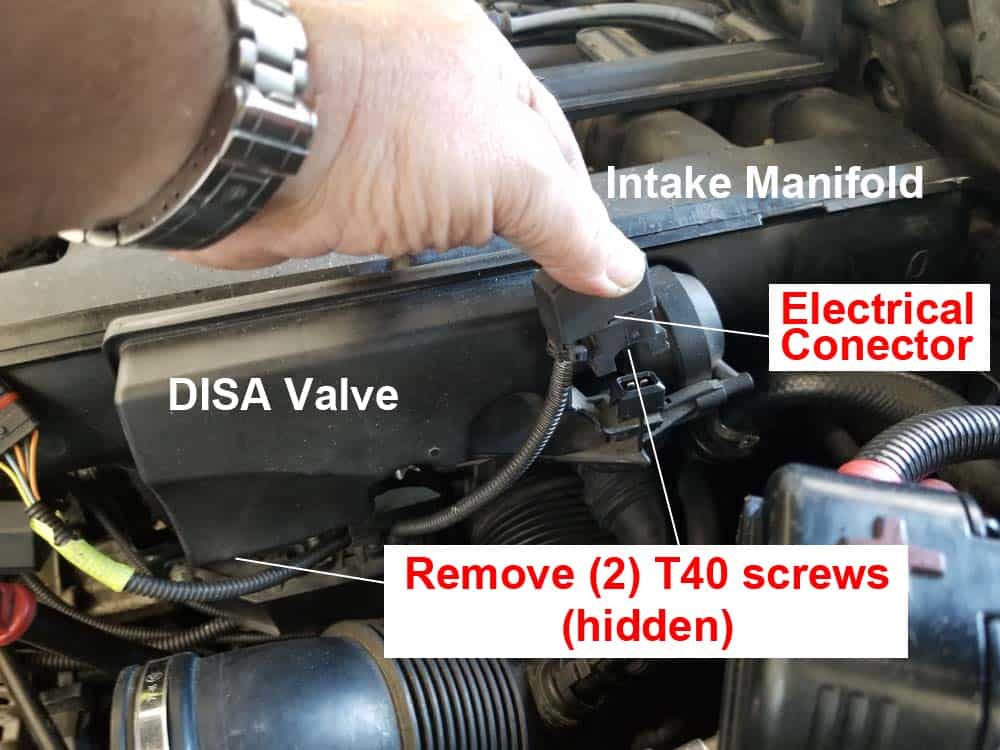
- Grasp the DISA valve and pull straight out from intake manifold and remove from vehicle.
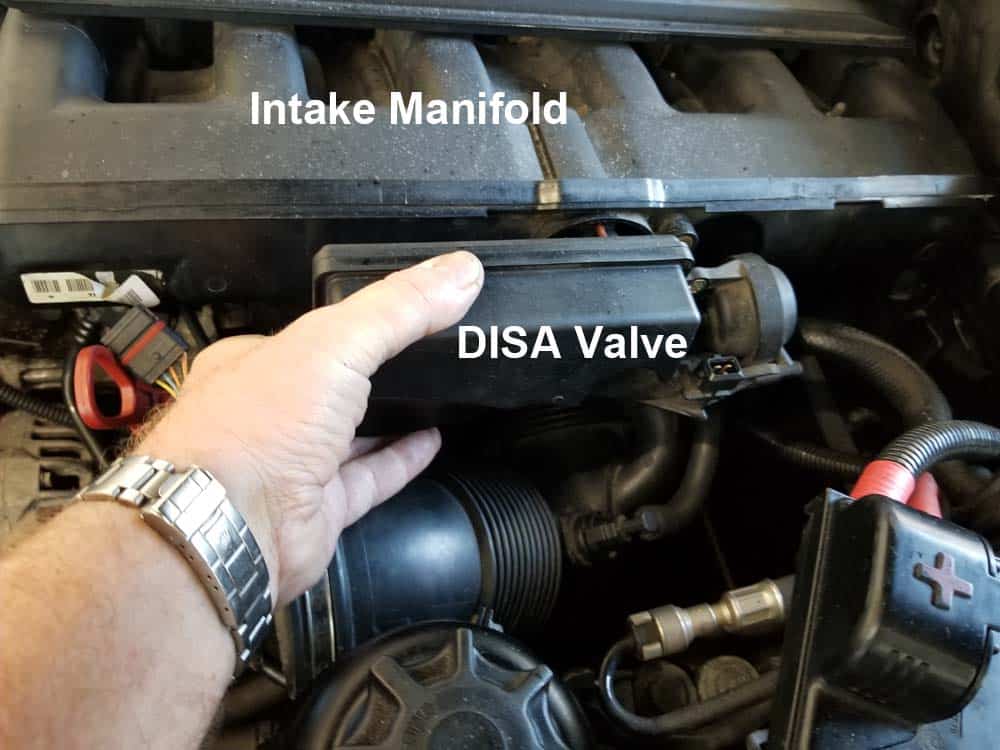
- Loosen the hose clamp and disconnect the intake boot from the idle control valve.
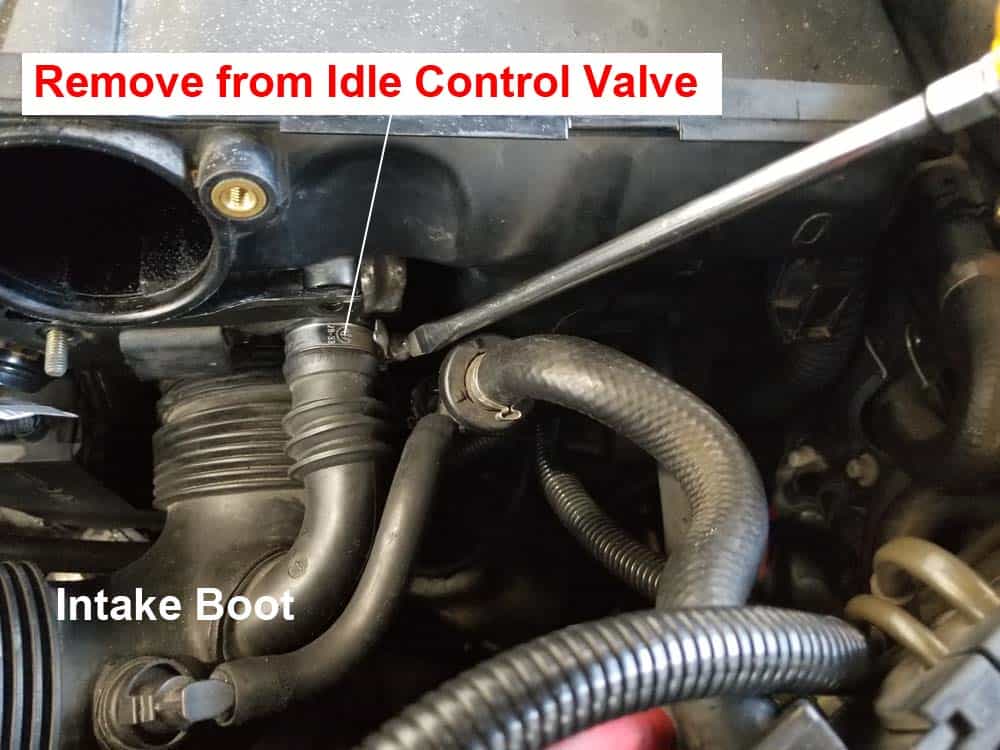
- Carefully grasp idle control valve and pull straight out from intake manifold. Disconnect electrical connector from idle control valve then remove valve from vehicle.
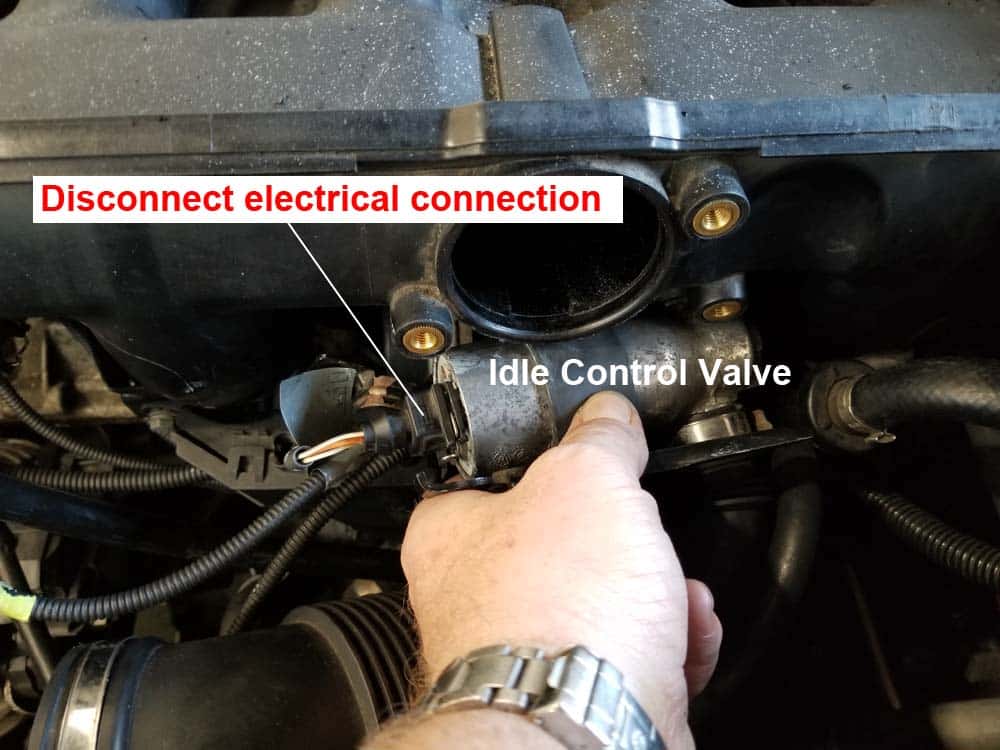
- Using a pair of needle nose pliers, carefully remove idle control valve grommet from intake manifold.

BMW E60 Rough Idle Repair Finished

